How Lithium Batteries Affect Golf Cart Speed
The type of battery used in a golf cart plays a crucial role in how well the vehicle performs. Among the many advancements in golf cart technology, lithium batteries have stood out for their impressive impact on golf cart speed. Whether you’re a golf enthusiast or use a cart for transportation in gated communities, understanding how lithium batteries influence performance is vital.
- Understanding the Basics of Golf Cart Speed
- Golf Cart Speed Benefits With Lithium Batteries
- Technical Breakdown: Why Lithium Batteries Make a Difference
- Real-World Examples: Speed Improvements After Switching to Lithium
- How to Choose the Right Lithium Battery for Golf Cart Speed
- Additional Performance Benefits Beyond Speed
- Common Myths About Lithium Batteries and Golf Cart Speed
- Tips for Maximizing Golf Cart Speed With Lithium Batteries
- Legal Considerations for Faster Golf Carts
- Final Thoughts on How Lithium Batteries Affect Golf Cart Speed
Understanding the Basics of Golf Cart Speed
To understand how lithium batteries affect golf cart speed, it’s important to explore what defines speed in the first place. Speed in a golf cart can be influenced by a variety of components including the motor, controller, weight of the cart, tire size, terrain, and, of course, the battery system.
What Is the Typical Speed of a Golf Cart?
Most standard golf carts powered by lead-acid batteries run at speeds between 12 and 14 mph. Some upgraded carts with enhanced controllers or lifted suspensions can reach speeds up to 20–25 mph. However, speed isn't just about the maximum miles per hour; it's about acceleration, hill-climbing capability, and responsiveness—all areas where lithium batteries shine.
How Batteries Influence Golf Cart Speed
Batteries are the power source of electric golf carts. The stronger and more efficient the battery, the better the vehicle can perform. Traditional lead-acid batteries have limitations in energy output, voltage stability, and weight, all of which can suppress the speed and acceleration of a golf cart. This is where lithium batteries change the game.
>>See also Is 13 Point 2 Volts a Healthy Battery Voltage
Golf Cart Speed Benefits With Lithium Batteries
Upgrading to lithium batteries brings an immediate and noticeable improvement in golf cart speed. From quicker acceleration to smoother performance under load, lithium technology enhances multiple aspects of cart operation.
Higher Voltage Availability
Lithium batteries can maintain higher voltage levels throughout their discharge cycle compared to lead-acid batteries. This consistent voltage leads to better power output, which in turn increases golf cart speed and performance.
Lightweight Design
One of the major drawbacks of lead-acid batteries is their weight. A typical set of lead-acid batteries can add hundreds of pounds to the total weight of the cart. In contrast, lithium batteries weigh up to 70% less. Reducing weight improves power-to-weight ratio and leads to better acceleration, easier hill climbing, and higher top speeds.
Increased Energy Efficiency
Lithium batteries are far more energy-efficient than lead-acid models. With up to 95% of energy being usable, your golf cart can perform better with less strain on the system. This efficiency directly influences the golf cart speed, especially during longer outings or continuous use.
Technical Breakdown: Why Lithium Batteries Make a Difference
Let’s dive deeper into the technical aspects that explain why lithium batteries make a noticeable difference in golf cart speed.
Voltage Sag and Power Delivery
Lead-acid batteries are known to suffer from voltage sag, especially under heavy loads. This sag results in a drop in performance, including slower acceleration and reduced hill-climbing power. Lithium batteries, however, maintain consistent voltage levels, meaning power delivery is stable and reliable.
Discharge Rates
Lithium batteries have higher discharge rates, enabling them to deliver power more rapidly. This helps the cart accelerate faster and handle steeper terrain without losing speed. When you compare two golf carts—one with lithium and one with lead-acid—you'll find the lithium-powered cart pulls ahead every time.
Depth of Discharge (DoD)
With lithium, the usable capacity is much higher. You can safely use 80–90% of the total battery capacity without damaging the cells. Lead-acid batteries, by contrast, should only be discharged to about 50% to maintain longevity. This increased capacity means more consistent performance, and ultimately, improved golf cart speed.
Real-World Examples: Speed Improvements After Switching to Lithium
Many users who have upgraded their golf carts to lithium batteries report tangible improvements in speed and overall performance. In side-by-side tests, lithium-powered carts often gain 3–5 mph in top speed and experience dramatically better hill performance.
Case Study: Neighborhood Transport Cart
A community electric vehicle used for neighborhood patrols was converted from lead-acid to lithium batteries. Before the upgrade, the top speed was 13 mph. After conversion, the speed increased to 18 mph, and acceleration was noticeably smoother and quicker.
Case Study: Golf Course Cart
A golf cart used on a busy course with hilly terrain showed poor speed and power retention throughout the day with lead-acid batteries. After switching to lithium, the cart maintained a consistent 20 mph on flat terrain and could climb hills without dropping below 15 mph.
How to Choose the Right Lithium Battery for Golf Cart Speed
Choosing the right lithium battery involves more than just buying the highest voltage option. The key factors include voltage, capacity, battery chemistry, and compatibility with your existing golf cart setup.
Voltage and Speed Correlation
Most golf carts operate on 36V or 48V systems. Increasing voltage can increase golf cart speed, but only if your motor and controller can handle the change. For example, upgrading from 36V to 48V often results in a 20–25% increase in speed.
Battery Management System (BMS)
A good BMS ensures your lithium batteries are operating within safe limits. An advanced BMS can also balance cells more effectively, provide diagnostics, and even optimize performance to further enhance speed.
Brands and Battery Packs
Some popular brands for lithium battery conversions include RoyPow, Allied, Dakota Lithium, and RELiON. Many offer plug-and-play kits that are specifically designed for golf carts and can increase golf cart speed with minimal setup time.
Additional Performance Benefits Beyond Speed
While speed is a major benefit, lithium batteries also enhance the overall experience of using a golf cart. These benefits indirectly support improved speed as well.
Better Handling and Control
Because lithium batteries weigh less, the vehicle has a lower center of gravity, improving handling and stability. This makes higher speeds safer and more manageable.
Lower Maintenance and Consistent Performance
Lithium batteries require no water refilling, no corrosion checks, and virtually no maintenance. Their consistent performance ensures that golf cart speed doesn’t fluctuate over time like it does with aging lead-acid batteries.
Faster Charging Means More Time on the Course
Lithium batteries can be charged in 2–4 hours compared to 8–10 hours for lead-acid. This means you can get back on the course faster and at full performance levels.
Common Myths About Lithium Batteries and Golf Cart Speed
Despite all the benefits, some misconceptions remain. Let’s clear a few of them up.
Myth 1: Lithium Batteries Are Only for Racing Carts
While it's true that performance carts benefit the most, even standard golf carts will see improved golf cart speed with lithium upgrades.
Myth 2: You Need to Replace the Entire System
Not always. Many lithium battery kits are designed to work with existing controllers and motors. You might not need to overhaul your entire system to enjoy better speed and performance.
Myth 3: Lithium Is Too Expensive
While the upfront cost is higher, lithium batteries often last 2–4 times longer than lead-acid, saving you money in the long run—especially when factoring in the enhanced performance, including speed.
>>See also Equivalent Batteries to LR44 Explained
Tips for Maximizing Golf Cart Speed With Lithium Batteries
Want to get the most out of your lithium-powered cart? Here are some practical tips:
1. Upgrade your controller – To handle higher current flow and unlock higher speeds.
2. Check your tires – Larger or more efficient tires can complement battery upgrades.
3. Keep your cart light – Avoid carrying unnecessary weight that could slow you down.
4. Maintain proper alignment – Misaligned wheels create drag and reduce speed.
5. Monitor your BMS – Keep an eye on the health and balance of your battery pack.
Legal Considerations for Faster Golf Carts
Before upgrading your cart for maximum golf cart speed, check local regulations. Some communities or golf courses may have speed limits or restrictions for safety. In some areas, exceeding certain speed thresholds may reclassify your golf cart as a low-speed vehicle (LSV), which could require licensing or insurance.
Final Thoughts on How Lithium Batteries Affect Golf Cart Speed
Lithium batteries are a game-changer in the world of electric golf carts. They offer higher voltage, lighter weight, and greater efficiency, all of which contribute to faster acceleration, better hill-climbing ability, and overall improved golf cart speed. Whether you're looking to shave time off your course rounds or simply want a smoother, zippier ride through your neighborhood, switching to lithium batteries is one of the smartest upgrades you can make.
When it comes to modern electric mobility, few improvements make as big of a difference as upgrading your battery system. And now you know—golf cart speed is one area where lithium truly shines.

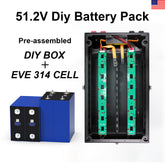

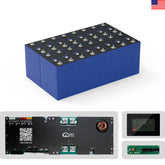

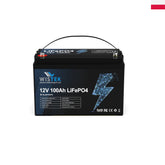

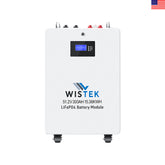
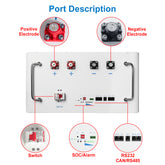
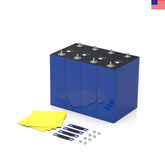



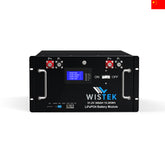
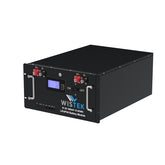
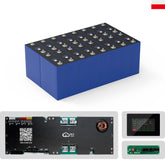








Leave a comment
All blog comments are checked prior to publishing